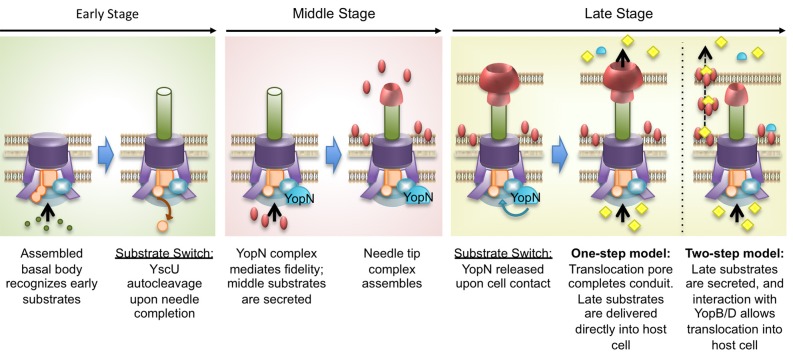Figure 2.
Progression of injectisome assembly and activation. In the early stage, the basal body recognizes early substrates (green) for secretion. These substrates are required for needle formation. Upon completing needle assembly, YscU (orange) undergoes autocleavage, which triggers a substrate specificity switch and transition to the middle stage. During this phase, YopN associates with the basal body to allow middle substrates (red) to be secreted, while rejecting late substrates. The middle substrates are required to form the tip complex and translocation pores. Upon cell contact, YopN is released from the basal body and secreted, triggering transition to the late stage. Two models are presented to depict the late stage. In the One-step model, the pore complex assembles at the tip of the needle to create a continuous channel, through which late substrates (yellow) are injected. In the Two-step model, late substrates are secreted into the extracellular space and then interact with pore proteins. The late substrate-pore complexes diffuse across the space and interact with the host membrane to deliver the late substrates.

